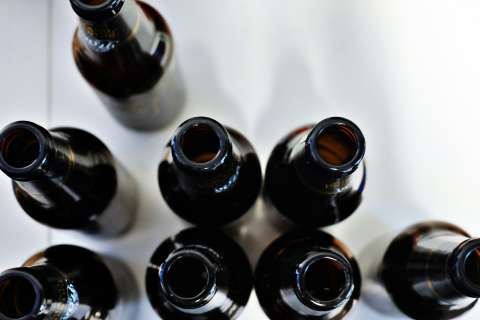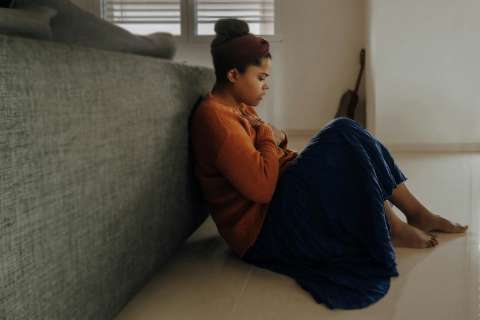The unprecedented devastation of the L.A. wildfires – nearly 80 square miles burned, more than 16,000 structures destroyed and at least 29 lives lost – has led to widespread trauma across Southern California and beyond.
There’s the trauma of losing homes, schools and landmarks; the trauma of witnessing massive destruction in our communities and painful losses experienced by neighbors and friends; and the sadness of losing beloved landscapes.
“Catastrophic wildfire has just cascading and all-encompassing impacts on our mental health and well-being,” said Blake Ellis, MSW, a certified forest therapy guide who lives near Paradise, Calif., where the 2018 Camp Fire claimed 86 lives and charred more than 150,000 acres. Ellis made the remarks at a recent webinar sponsored by the University of California Center for Climate, Health and Equity and the UCLA Fielding School of Public Health’s Center for Public Health and Disasters.
While the thousands who lost their homes in the L.A. wildfires continue to wade through grief and bureaucracies as they repair their lives, even those far from the fire zones may be contending with feelings of loss – loss of neighborhoods they knew and natural spaces they loved.
There’s a term for the particular pain of environmental change: “solastalgia.” Coined in 2007 by Australian professor Glenn Albrecht, solastalgia refers to the distress generated by the destruction or disappearance of treasured natural spaces.
It’s “the loss of psychological, emotional, or spiritual well-being that comes from being surrounded by a place you love and cherish,” says David Eisenman, MD, director of the Center for Public Health and Disasters and co-director of the Center for Healthy Climate Solutions.
This feeling of solastalgia can add to the direct and vicarious trauma of the fires, experts say.
“The known phenomena about natural disasters and catastrophic events in general is that the closer you are to it physically, the more potential psychological impact,” says Emanuel Maidenberg, PhD, a psychologist with UCLA Health.
Experiencing, or even witnessing, wildfire destruction “makes us understand that we’re more vulnerable than we’re willing to think about most of the time,” Dr. Maidenberg says.
Losing natural spaces
The Eaton fire damaged many beloved hiking trails in the San Gabriel Mountains, including the Eaton Canyon trail, which led to a waterfall. Topanga State Park and Will Rogers State Historic Park are still closed due to damage from the Palisades fire. Popular hiking spots, including Temescal Canyon trail, with ocean and canyon views, burned. Access to a stretch of Pacific Coast Highway remains restricted. And the area looks nothing like it did, with so many landmarks flattened to ash.
Anyone who frequented these places – or just appreciated their existence – may be experiencing solastalgia now. Dr. Eisenman, for instance, says he is mourning his favorite place in Will Rogers park.
“I hike to the top of Will Rogers once a week. I look out from a particular spot and I think, ‘I am so fortunate to live here,’” he says. “Whenever visitors come, I take them to that one spot. And even when I go alone, it just resets me. It’s a part of my life.”
Watching coverage of the Palisades fire, he saw the flames reach that location, and shed tears for the loss of one of his favorite places in the city.
The feeling of solastalgia resonates with Angelenos because, for many of us, the diverse natural surroundings are something we love about our city – how you can see snow-covered mountains from the freeway; how Griffith Park teems with wildlife in the middle of an urban center; how, on a clear day, you can see the ocean from Century City high-rises.
“A lot of us live here because of the landscape,” Dr. Eisenman says. “It’s part of our reason for living here. … It’s our icon and it’s our loved resource. Like Notre Dame for Parisians, our great symbol burned.”
Solastalgia comes with climate change, he says: As drought, fire and rising oceans change the landscape, we experience these losses emotionally and psychologically. It’s a form of grief.
“I'm not trying to say it's like anything compared to losing a house or a loved one,” Dr. Eisenman says. “It's just another layer that needs to be recognized. It’s one more thing that unifies us as a community that’s been hurt, and it may be one more way of accessing healing approaches.”
Healing through the environment
A small study with survivors of the Camp Fire found that community-based forest therapy programs can be a source of trauma-informed mental health care after natural disasters. Forest therapy, which aims to support mental, social and physical health through enhanced connection to nature and other people, can help treat solastalgia.
“Forest therapy decreases symptoms of PTSD, depression, stress and anxiety,” said Ellis, who participated in the study. “This is a really hopeful intervention for long-term disaster recovery, specifically in the context of catastrophic wildfire.”
Community connection is another salve for the grief and trauma of wildfire, says Vickie Mays, PhD, a psychology professor with UCLA Fielding School of Public Health. Dr. Mays, who was on the ground in New Orleans providing support after Hurricane Katrina, says she helps communities develop rituals and ways to come together after disaster as part of the healing process. In the aftermath of the L.A. fires, she and others are leveraging neighborhood watch groups to get the word out about community-wide efforts: “It’s one of the ways we’re hoping to rebuild,” she says.
For his part, Dr. Eisenman plans to channel his grief over the loss of his favorite hiking spot into volunteering to do trail restoration in the Santa Monica Mountains.
“It will allow me to get back into those mountains sooner,” he says.





